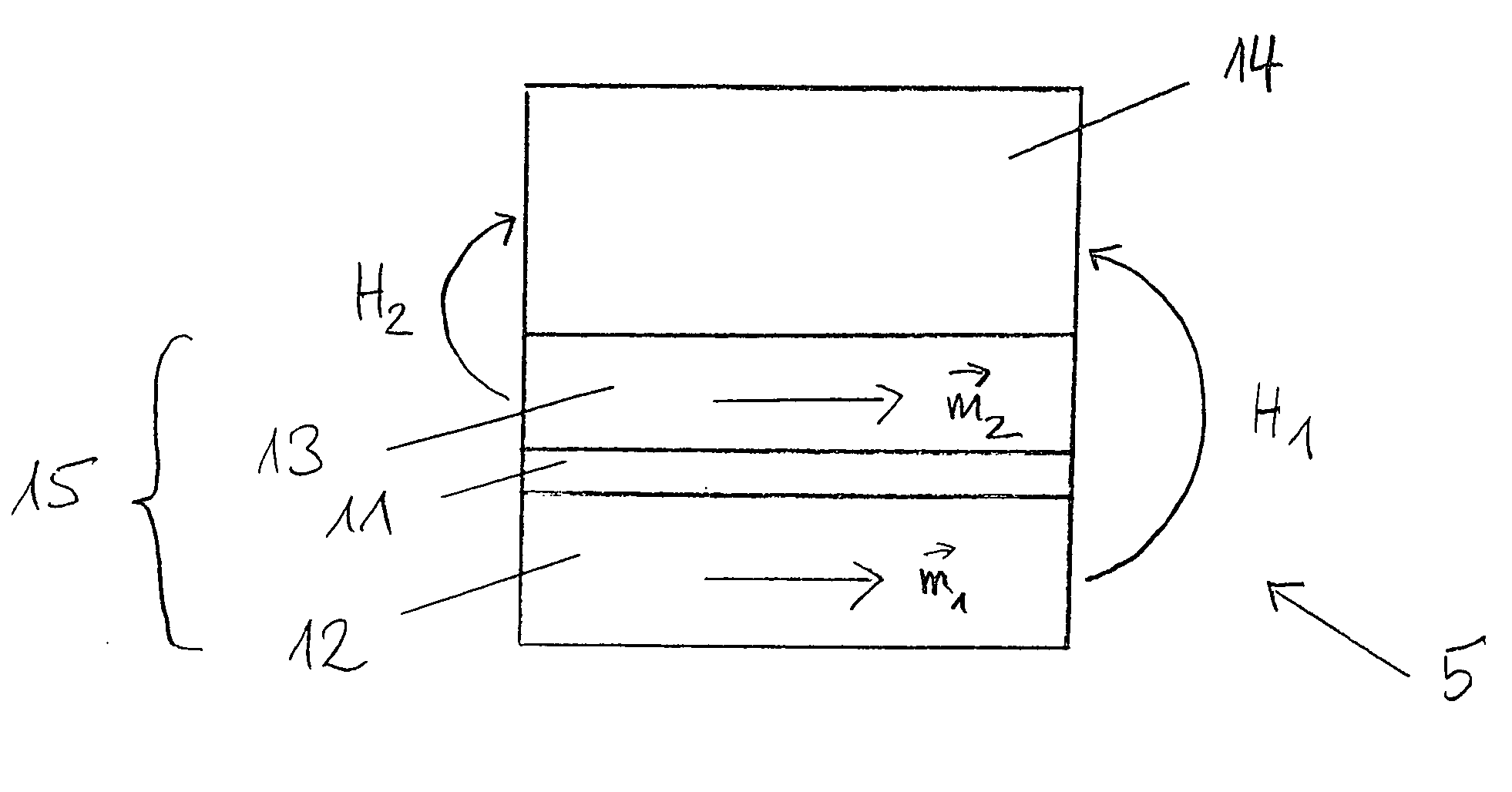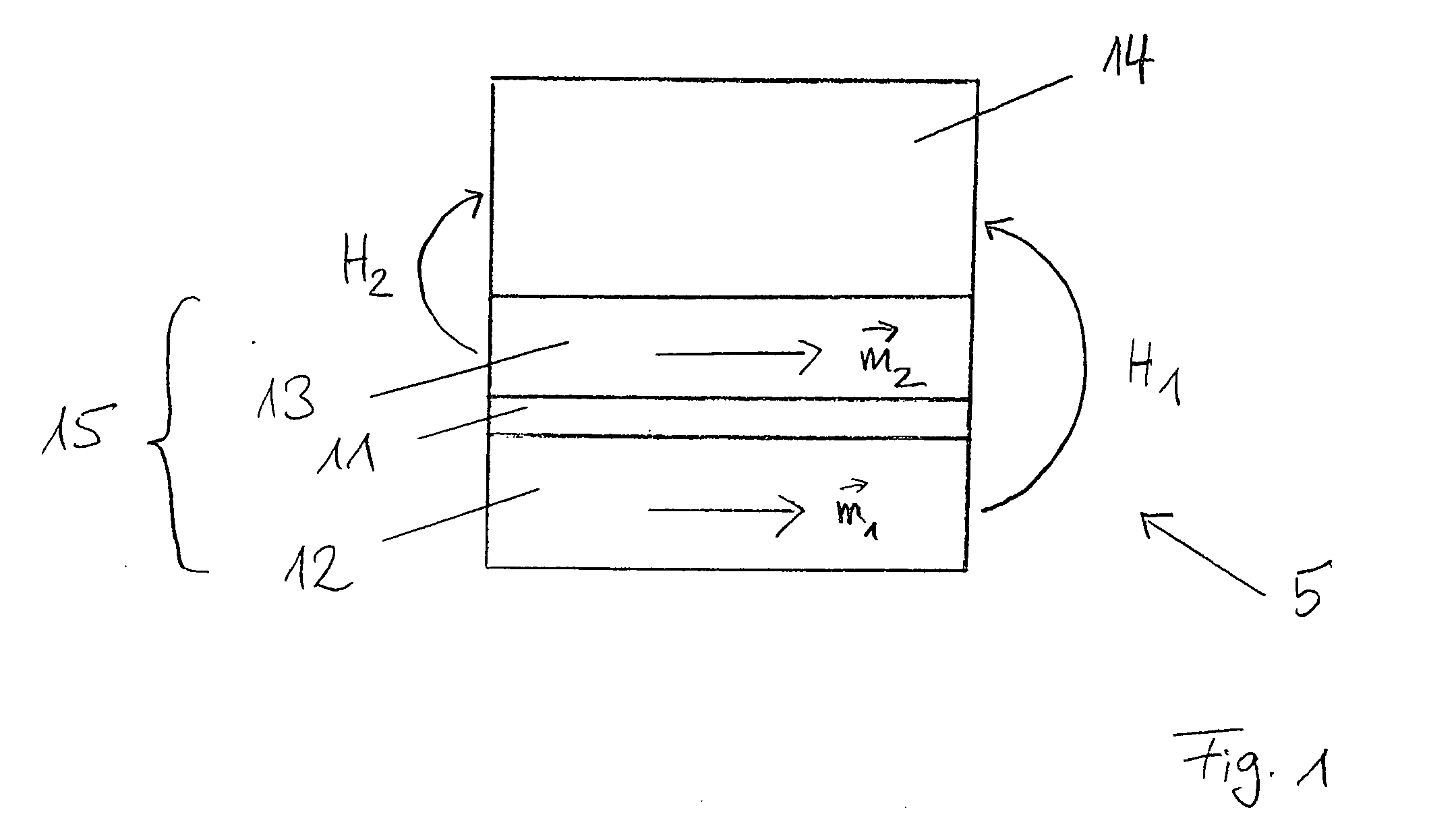Magnetoresistive layer system and sensor element with said layer system
a layer system and magnetoresistive technology, applied in the field of magnetoresistive layer system and sensor element with said layer system, can solve the problems of sensor element working point and marked loss of sensitivity
- Summary
- Abstract
- Description
- Claims
- Application Information
AI Technical Summary
Benefits of technology
Problems solved by technology
Method used
Image
Examples
Embodiment Construction
[0016]FIG. 1 shows a first magnetic layer 12 with a resulting magnetization m1, having the direction indicated in FIG. 1, on which an intermediate layer 11 is situated. A second magnetic layer 13 with a resulting magnetization mz having the direction indicated in FIG. 1 is arranged on intermediate layer 11. Positioned on second magnetic layer 13 is a magneto-resistive layer stack 14 as it is known per se from the related art. In particular, magneto-resistive layer stack 14 works on the basis of the GMR effect according to the coupled multilayer principle or according to the spin valve principle. First magnetic layer 12, intermediate layer 11 and second magnetic layer 13 jointly form a layer arrangement 15, which generates a resulting magnetic field that acts on the magneto-resistive layer stack. Furthermore, it is provided that first magnetic layer 12 and second magnetic layer 13 be ferromagnetically exchange-coupled via intermediate layer 11.
[0017] First magnetic layer 12 is, for ...
PUM
 Login to View More
Login to View More Abstract
Description
Claims
Application Information
 Login to View More
Login to View More - R&D
- Intellectual Property
- Life Sciences
- Materials
- Tech Scout
- Unparalleled Data Quality
- Higher Quality Content
- 60% Fewer Hallucinations
Browse by: Latest US Patents, China's latest patents, Technical Efficacy Thesaurus, Application Domain, Technology Topic, Popular Technical Reports.
© 2025 PatSnap. All rights reserved.Legal|Privacy policy|Modern Slavery Act Transparency Statement|Sitemap|About US| Contact US: help@patsnap.com


